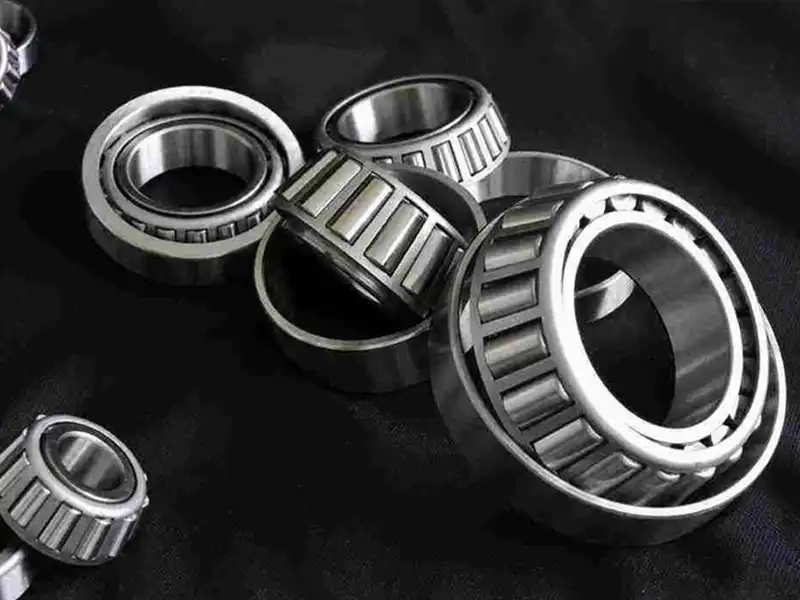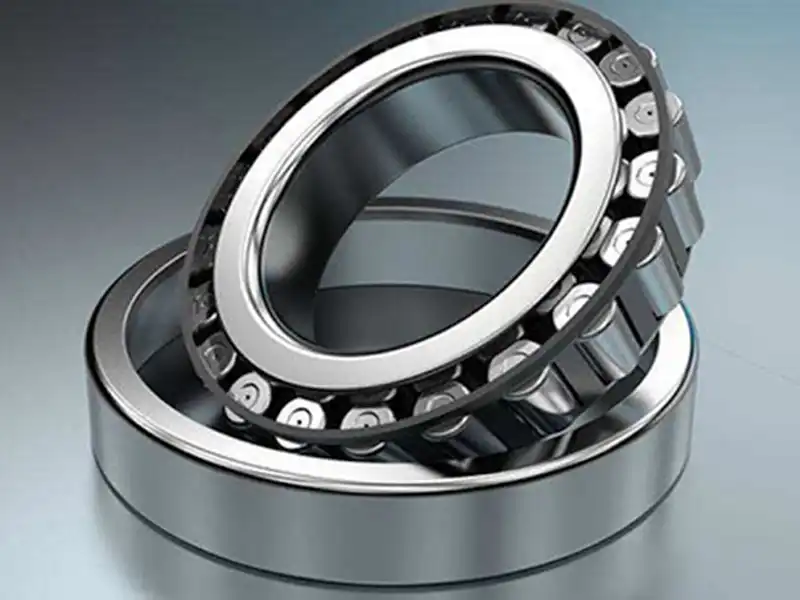What Materials are Tapered Rolling Bearings Made From?
Tapered rolling bearings are critical components in numerous mechanical systems, playing a pivotal role in transmitting loads and enabling smooth rotational movement across diverse industrial applications. These specialized bearings are engineered to handle both radial and axial loads simultaneously, making them indispensable in machinery ranging from automotive transmissions to heavy industrial equipment. The materials used in their construction are fundamental to their performance, durability, and overall operational efficiency.

How Do Material Choices Impact the Performance of Tapered Rolling Bearings?
Material selection represents a cornerstone of tapered rolling bearing design, directly influencing their mechanical properties, reliability, and operational lifespan. Engineers and manufacturers meticulously evaluate multiple factors when determining the most appropriate materials for these precision components. The intricate balance between material characteristics such as hardness, tensile strength, corrosion resistance, and thermal stability determines the bearing's ability to withstand extreme operational conditions.
The performance metrics of tapered rolling bearings are intimately linked to their material composition. Different industrial environments demand specific material properties to ensure optimal functionality. For instance, bearings operating in high-temperature settings require materials with exceptional heat resistance and minimal thermal expansion. Conversely, bearings deployed in corrosive environments necessitate materials with superior chemical resistance and protective surface treatments.
Modern material science has revolutionized bearing technology by introducing advanced metallurgical techniques and alloy compositions. Traditional materials like chrome steel have been enhanced through precise alloying processes, introducing elements such as chromium, molybdenum, and vanadium to improve structural integrity and wear resistance. These sophisticated material formulations enable tapered rolling bearings to operate under increasingly demanding conditions, supporting higher loads, maintaining dimensional stability, and extending operational lifespans.
The selection process involves comprehensive computational modeling and extensive laboratory testing to simulate real-world performance scenarios. Manufacturers employ advanced simulation techniques to predict material behavior under various stress conditions, allowing for precise optimization of material compositions. This approach ensures that tapered rolling bearings can consistently meet or exceed the stringent performance requirements of modern industrial applications.
Furthermore, material choices significantly impact manufacturing complexity and production costs. While high-performance materials might offer superior characteristics, they often require more sophisticated processing techniques and specialized manufacturing infrastructure. Engineers must strike a delicate balance between material performance, manufacturing feasibility, and economic considerations.
What Makes Steel the Preferred Material for Tapered Rolling Bearings?

Steel has long been the foundational material for tapered rolling bearings, offering an unparalleled combination of mechanical properties that make it exceptionally suitable for precision engineering applications. The inherent characteristics of steel, particularly specialized bearing steels, provide a robust foundation for creating high-performance mechanical components capable of withstanding substantial operational stresses.
Bearing-grade steel, typically classified under standards like AISI 52100 (chrome steel), represents the gold standard in tapered rolling bearing material selection. This specific steel variant contains approximately 1% carbon and 1.5% chromium, creating a microstructure that delivers exceptional hardness, wear resistance, and fatigue strength. The precise metallurgical composition enables these bearings to maintain dimensional stability and resist deformation under significant mechanical loads.
The manufacturing process for steel tapered rolling bearings involves multiple sophisticated stages designed to optimize material properties. Initial steel production focuses on achieving minimal impurity levels and consistent microstructural characteristics. Advanced metallurgical techniques like vacuum degassing and electroslag remelting ensure exceptional material purity, eliminating potential defect sources that could compromise bearing performance.
Heat treatment represents another critical phase in steel bearing production. Processes like carburizing, nitriding, and induction hardening modify the material's surface and subsurface properties, enhancing wear resistance and extending operational lifespans. These treatments create carefully engineered material layers with distinct hardness gradients, providing superior load-bearing capabilities and resistance to fatigue-induced failures.
Modern steel formulations have expanded beyond traditional compositions, incorporating advanced alloying elements and nano-structured materials. Emerging technologies like powder metallurgy enable the creation of steel bearings with unprecedented precision in microstructural control. These innovations allow manufacturers to develop bearings with increasingly specialized performance characteristics, tailored to specific industrial requirements.
The economic feasibility of steel further reinforces its dominance in tapered rolling bearing manufacturing. Relative cost-effectiveness, combined with well-established production infrastructure and extensive material research, makes steel an attractive choice for engineers and procurement specialists. The predictable performance and widely understood material behavior provide additional confidence in design and application.
Can Advanced Composite Materials Replace Traditional Bearing Substances?

The emergence of advanced composite materials represents a fascinating frontier in tapered rolling bearing technology, challenging traditional material paradigms and offering potential performance enhancements. Composite materials, strategically combining multiple substance types to create hybrid structures, present unique opportunities for addressing existing technological limitations in bearing design.
Ceramic composites have garnered significant attention as potential alternatives to conventional steel bearings. Materials like silicon nitride and tungsten carbide demonstrate exceptional hardness, superior thermal stability, and remarkable chemical resistance. These characteristics make them particularly attractive for extreme operational environments where traditional metal bearings might experience accelerated degradation.
Polymer-based composite bearings have also witnessed substantial technological advancements. Advanced engineering polymers like polyetheretherketone (PEEK) and polyimide offer lightweight configurations with impressive self-lubricating properties. These materials can provide significant weight reduction compared to metallic counterparts while maintaining competitive mechanical performance across various application domains.
Hybrid ceramic-metallic composites represent another promising research direction, combining the strengths of multiple material classes. By strategically integrating ceramic reinforcement elements within metallic matrices, researchers can develop bearings with enhanced wear resistance, improved thermal characteristics, and superior load-bearing capabilities.
The potential of composite materials extends beyond pure performance metrics. Environmental considerations and sustainability objectives are increasingly driving material innovation. Composite bearings often require less energy-intensive manufacturing processes and can offer improved recyclability compared to traditional steel alternatives.
However, widespread adoption of composite materials in tapered rolling bearings remains constrained by several technological and economic challenges. Current production techniques struggle to consistently achieve the precise dimensional tolerances required for high-precision applications. Additionally, the higher material and processing costs present significant market barriers.
Conclusion
Tapered rolling bearing materials represent a complex interplay of engineering principles, material science, and industrial requirements. While steel remains the predominant material, emerging composite technologies promise exciting future developments in bearing design and performance.
Luoyang Huigong Bearing Technology Co., Ltd. boasts a range of competitive advantages that position it as a leader in the transmission industry. Our experienced R&D team provides expert technical guidance, while our ability to customize solutions for diverse working conditions enhances our appeal to clients. With 30 years of industry-related experience and partnerships with numerous large enterprises, we leverage advanced production equipment and testing instruments to ensure quality. Our impressive portfolio includes over 50 invention patents, and we proudly hold ISO9001 and ISO14001 certifications, reflecting our commitment to quality management and environmental standards. Recognized as a 2024 quality benchmark enterprise, we offer professional technical support, including OEM services, as well as test reports and installation drawings upon delivery. Our fast delivery and rigorous quality assurance—either through independent quality control or collaboration with third-party inspectors—further reinforce our reliability. With many successful collaborations domestically and internationally, we invite you to learn more about our products by contacting CHG at sale@chg-bearing.com or calling our hotline at +86-0379-65793878.
References
1. ASM International Handbook of Bearings
2. Materials Science and Engineering Journal, Volume 45
3. International Bearing Design Conference Proceedings
4. Advanced Materials Technology Review
5. Mechanical Engineering Research Publications
6. Industrial Tribology and Lubrication Journal
7. Bearing Materials and Design Innovations
8. Journal of Material Science and Engineering
9. Precision Engineering Research Quarterly
10. International Standards in Mechanical Components

